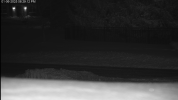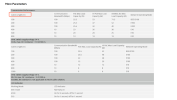mat200
IPCT Contributor
- Jan 17, 2017
- 16,640
- 27,975
So here's where I am.... I am trying to figure out everything I need to set this up. Even tho this is all new to me, I am more than capable to do this part. Just need a little guidance to ensure I do it right. I want to be sure I fully understand everything required and not run into something I wasn't expecting.
I found a couple illustrations showing 2 different setups. Is this what I want for 4 cameras? I doubt I'd need anymore than that for the lower driveway. Do I use both a NVR and a dedicated PC? I thought it was one or the other. If someone has a better pic or link that would show what I need, I'd appreciate it.
From the cameras to the POE switch that Ri22o linked would be fiber with RJ45's. Does that POE switch need to be outside, or could I put it inside the house? Is the fiber flexible enough to use for everything else in the house or would I switch to cat5 for that?
Materials needed so far are the POE switch, a roll of fiber, box of RJ45 terminals and the tools needed to install them. I'll stop here so I don't cause any more confusion like I did earlier.
Thanx!
iirc on some NVRs w/PoE ports gets complicated to get the cameras to run a switch off that port.






